When the Century Place apartment building in Coquitlam recently sold, the buyer took control of an asset that grosses nearly $1.5 million a year in revenue.
The five-storey 1970 building at 523 Gatensbury St. in the Austin Heights neighbourhood, a couple of blocks from the Vancouver Golf Club, has 97 suites. The majority are one- and two-bedroom apartments, and there are also a few bachelors and a couple of three-bedrooms.
At the time of the sale, tenants paid an average of $1,133 a month for a one-bedroom and $1,434 for a two-bedroom, according to the real estate agent’s listing information, which is on the low side for apartments in the Lower Mainland.
Still, the monthly rent collected adds up, along with money from other sources such as providing laundry services, to nearly $125,000.
On an annual basis, after all expenses aside from any financing costs, the owners would net about $835,000.
With the building having sold for $23 million, that works out to a 3.6 per cent return even before any rent increases or capital gains from rising real estate values. For an owner who could buy the building outright, it’s a decent monthly income while they wait, comparable to the dividends paid by many blue chip stocks.
An analysis by The Tyee shows the Century Place is typical of apartment buildings in British Columbia that have either been listed for sale or sold in recent months. The listings offer steady income that’s likely to rise, plus the possibility of future capital gains as property values increase.
Bottom line, owning a multi-family rental building in B.C. remains a profitable endeavour, despite claims from advocates for landowners opposed to recently announced caps on rents that will keep increases below the rate of inflation.
On Sept. 11 the provincial government announced that although inflation over the previous 12 months had averaged 5.6 per cent, it was capping the allowable rent increases for 2024 at 3.5 per cent.
Roughly a third of households in the province rent. Under the former BC Liberal government, now BC United, rents were allowed to rise at the rate of inflation plus two per cent for 15 years, a formula that by 2018 led to rents being some 40 per cent higher than they would have been if they had been capped at the rate of inflation, thanks to compounding.
Starting in 2019 the NDP government capped allowable increases at the rate of inflation, but it departed from the formula in the first two years of the COVID-19 pandemic, when it did not allow any increase. In 2023, with inflation running at 5.4 per cent, the government capped rent increases at two per cent.
When Housing Minister Ravi Kahlon announced the 2024 cap, he stressed that the government had tried to balance the needs of both renters and landowners.
“We know that global inflation is hitting everyone,” he said in an interview. “Renters are facing the pressure of all the costs that have gone up, and as well we know that some landlords are having real pressures with interest rates going up.”
Departing from the pledge to match rent increases to inflation and setting a lower cap was the right thing to do, said Kahlon. “We believe it is a balance between ensuring the renters don’t get the full 5.6 per cent hit that would come with where the regulation is and landlords getting a little more support to be able to cover the additional costs that they’re incurring.”
Responding to the announcement, a Goodman report put out by the real estate firm specializing in multi-family apartment sales, criticized the caps as a decision that would shortchange building owners by billions.
“For landlords, this cap on rental increases is challenging as expenses such as property taxes, maintenance, utilities and insurance have risen at much higher rates,” it said. “Compounding the issue, mortgage rates have increased at a torrid pace.”
The CEO of LandlordBC, David Hutniak, told CityNews that landowners were seeing insurance, taxes, utilities and other costs “increasing exponentially” and that landowners can’t “continue to operate a business on negative cash flow, year after year.”
He said it was true of small owners, but also bigger companies that were “just managing to continue to make investments in existing buildings.”
The comments from both Goodman and Hutniak ignore the fact that landowners making improvements to buildings or facing financial losses due to unexpected expenses can apply to the province’s Residential Tenancy Branch for additional rent increases beyond the caps.
Nor do their comments line up with publicly available information about the profitability of owning a rental.
A Statistics Canada report released last November provides insight on small landowners. It found that in 2020 most families with rental income were making money. More than three-quarters were turning a profit on their rental property after expenses, up from 63.1 per cent in 2008, and were averaging $4,880 a year on it.
Vancouver, Victoria, Toronto, Kelowna and Montreal were the cities with the highest proportion of families earning rental income.
Even owners who didn’t turn a profit on rent could be using the income to defray housing costs, generate income and support capital gains, Statistics Canada said. “Occasional or even regular annual losses, if not too significant, can be offset by the profits at the time of resale of the dwelling or by higher levels of rent in the future due to proper maintenance and improvements to the dwelling.”
The report did not include trusts or corporations and therefore reflected only a portion of the rental market. A media contact for Statistics Canada confirmed the agency has no information about the income and expenses of corporations or trusts that own multi-family rentals.
The Canada Mortgage and Housing Corp. did study the income and expenses for multi-unit residential buildings in 1997 using a survey. Rents and revenues were highest in the territories, Ontario and B.C., and lowest in jurisdictions with rent controls — but by publication time it did not provide any updated information.
One window on the profitability of larger buildings is through sales listings that include information on the income and expenses a buyer should expect.
The 40-unit Gardenia Court at 1530 Graveley St. in Vancouver’s Grandview-Woodland neighbourhood sold for $11.1 million, a couple of million below the asking price. The buyers should get a net operating income of $366,215, giving them a 3.3 per cent return on the sale price.
The Driftwood Apartments at 2055 York Ave. have an asking price of $39.8 million. The building has 75 units and dates from 1966. With a net operating income of $1.3 million, it too would provide a 3.3 per cent return before taking into account any capital gains.
The 23-unit Lonsdale Court at 8669 Heather St. is assessed at $8 million and nets $177,949 in income, a 2.2 per cent return.
The 16 units at 2231 Eton St. net $158,497 on an assessed value of $5.7 million, a 2.8 per cent return.
The story is the same elsewhere in the Lower Mainland. In Burnaby, the 41-unit Bethany Estate built in 1970 at 3940 Pender St. generates a net operating income of $336,675 on an assessed value of $11.4 million, or about a three per cent return.
The 10-unit Bradford Manor at 5353 Hastings St., also in Burnaby, generated net income of $95,145 on an assessed value of $3.3 million. That’s a 2.9 per cent return.
Listed at $10 million, the 28-unit Chestnut Court Apartments built in 1972 at 5262 Ladner Trunk Rd. in Ladner had a net operating income of $303,816, about a three per cent return.
The Cloverdale Apartments building at 5772 177B St. in Surrey was listed at $16.3 million. The 79 units in the 1973 building provide a net operating income of $577,408, or about 3.6 per cent return. The listing price was, by the way, nearly 40 per cent higher than the $11.8 million it had been assessed at in 2018.
In New Westminster, the Premiere at 408 E. Columbia St. has a net operating income of $1.7 million on its 72 units built in 2022. That’s a 4.6 per cent return based on the $36.8 million asking price, or six per cent on its 2023 assessed value of $27.8 million.
Rental buildings are profitable in other parts of the province as well. On Vancouver Island, the Sturdee Apartments at 519 Sturdee St. in Victoria recently sold for $6.3 million. The 30 units generate a net operating income of $230,705, or about a 3.65 per cent return on the sale price.
An eight-unit building at 2312 Wark St. in the capital has an asking price of $2.3 million. With a projected net operating income of $88,178, a new owner could expect a 3.8 per cent payout from their investment.
In Powell River on the Sunshine Coast, the 59-unit Glacier Apartments building built in 1968 at 7080 Glacier St. has an asking price of $7.2 million. With an expected net operating income of $306,440, the building would return about 4.3 per cent.
Up north in Kitimat, a town seeing a boom from the construction of a liquefied natural gas facility, a seller wanted $34.6 million for nine buildings that included a total of 263 suites. According to the listing, the buyer could expect an estimated net income of $4.6 million (though that was about double what the buildings were at the time grossing), which works out to 13.2 per cent of the asking price.
Every listing The Tyee looked at showed positive cash flow. While the building in Kitimat was an outlier, all of the others promised a net income somewhere between 2.2 and 4.6 per cent.
The calculations provide an idea of the income a buyer closing a deal could expect in the short term. But real estate is generally a long-term investment and the figures do not include the capital gains realized by past owners as property values rose.
For example, the 26-unit Geo-Ann Apartments at 310 E. 13th Ave. in Vancouver nets $261,854 on an assessed value of $11 million, a return of 2.4 per cent. The building sold in 2020 for $10.5 million, however, so over three years the owners have also seen a capital gain of $526,000, at least on paper, adding to their total return.
Over the long term, building owners in the province have seen significant capital gains. Data from BC Assessment shows that a typical multi-family building in B.C. was worth $722,675 in 2006 but had risen to $2.6 million in 2023.
That works out to a 7.8 per cent return each year that should be added to the net annual incomes from apartment buildings to understand the total profit owners will have seen.
There were, by the way, 16,124 such buildings assessed in 2006 and 18,421 in 2023. About one out of three of them are in the city of Vancouver.
The analysis does not account for the likelihood of rising rents either.
As Martine August, an assistant professor in the school of planning at the University of Waterloo, points out in a 2022 paper on the financialization of multi-family rental housing, landowners have opportunities to increase profits both by reducing expenses and by increasing revenues. They can charge more for ancillary services like parking, storage and utilities, as well as through rent increases.
Owners, which have increasingly been real estate investment trusts and other financial firms, she wrote, can raise rents by keeping up with allowable increases, applying for above guideline increases to pay for repairs and hiking rents to whatever the market will bear whenever a unit becomes vacant.
Law firms provide advice to owners on how to increase rents beyond the caps the government sets. Options include getting tenants to make voluntary agreements for larger increases or applying to the Residential Tenancy Branch for permission to raise rents to cover unexpected financial losses or for capital expenditures.
Indeed, average rents have risen much faster than the caps the government has set. According to figures the website Rentals.ca released in August, the average rent for a one-bedroom unit had gone up in the last year by 9.7 per cent in Surrey, 16.2 per cent in Vancouver and 19.6 per cent in Burnaby.
Or as the CMHC found in a January report on the 2022 rental market, in Vancouver “two-bedroom units that turned over were released at a rent that was 23.9 per cent higher, on average.”
On average, the report said, two-bedroom units that did not change tenants between 2021 and 2022 saw rent increases of 3.9 per cent.
There have been calls for years, including recently from the BC General Employees’ Union that represents some 85,000 workers mainly in the public sector, to introduce vacancy controls that would restrict the ability of landowners to hike rates in between tenants, instead tying the caps to the units.
The province has taken steps to move some buildings out of the private sector, including by buying some through BC Housing and creating a $500-million fund to help non-profits make purchases.
Vancouver is by far the most expensive rental market in Canada, with an average rent of $3,013 for a one-bedroom and $3,918 for a two-bedroom unit.
The provincial government’s assertion that it’s seeking “balance” between renters and landowners makes little sense considering how much owners have benefited as rents and land values have risen rapidly, said Alex Hemingway, a senior economist with the B.C. office of the Canadian Centre for Policy Alternatives think tank.
“Landlords are doing just fine,” he recently told The Tyee. “Better than fine in this housing market. We need to focus on protecting renters.” ![]()
Read more: Housing, Urban Planning




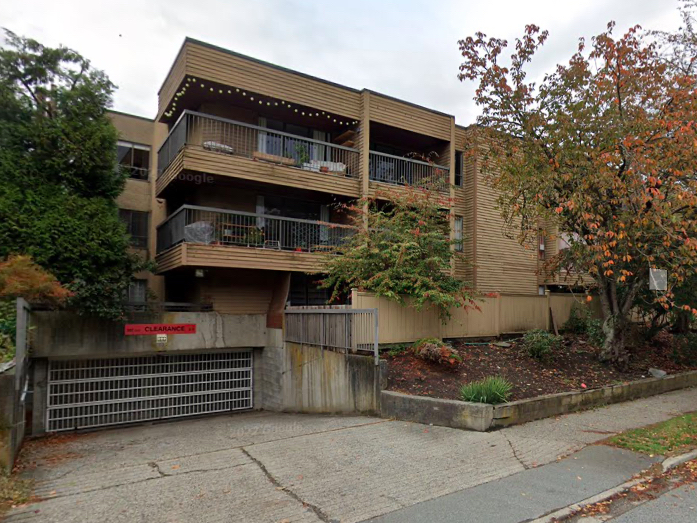
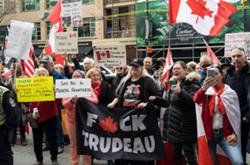
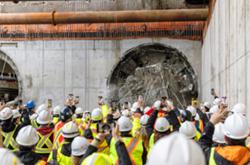
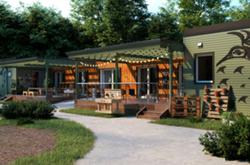


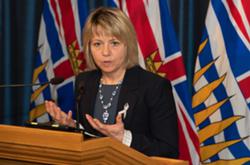
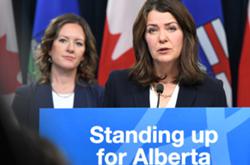

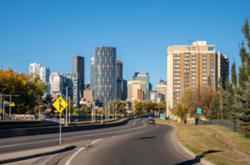



Tyee Commenting Guidelines
Comments that violate guidelines risk being deleted, and violations may result in a temporary or permanent user ban. Maintain the spirit of good conversation to stay in the discussion and be patient with moderators. Comments are reviewed regularly but not in real time.
Do:
Do not: